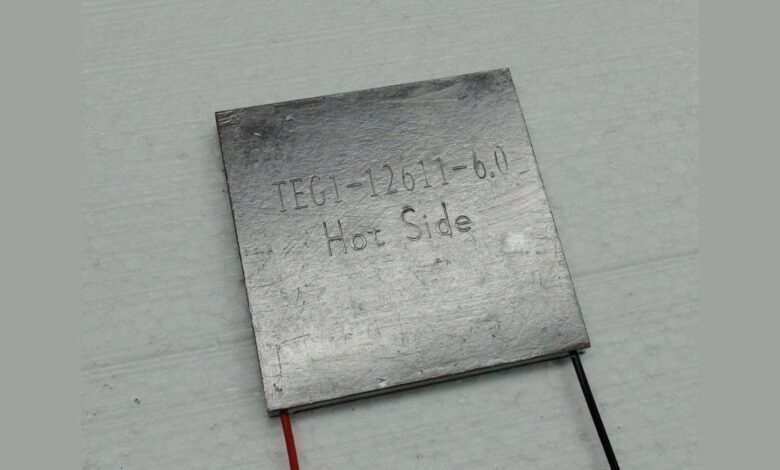Transverse Thomson Effect: Thermal Management Breakthrough

First Experimental Observation of the Transverse Thomson Effect
Researchers have recently achieved a groundbreaking milestone: the first experimental observation of the transverse Thomson effect. This thermoelectric phenomenon, predicted nearly a century ago, has remained elusive until now. The discovery opens new avenues for thermal management and energy applications. The original Thomson effect, a cornerstone of thermoelectric studies alongside the Peltier and Seebeck effects, involves the heating or cooling of a conductor when an electric current and a temperature gradient exist in the same direction.
Isolating the Transverse Thomson Effect
The transverse Thomson effect manifests when an electric current, magnetic field, and temperature gradient interact. A team led by Atsushi Takahagi successfully isolated this higher-order thermoelectric effect by applying periodic electric currents and extracting temperature modulations oscillating at the same frequency. Through meticulous measurements, they distinguished the transverse Thomson effect from other overlapping signals.
Experimental Setup and Methodology
The experiment involved two key steps:
- Applying Periodic Electric Currents: This created controlled temperature oscillations within the material.
- Extracting Temperature Modulations: By focusing on temperature changes oscillating at the same frequency as the applied current, researchers could isolate the transverse Thomson effect.
This careful approach allowed for the clear identification of the transverse Thomson effect’s unique signature.
The Role of Bismuth Antimony Alloy
To demonstrate the effect, the researchers chose a bismuth antimony alloy, known for its strong Nernst effect at room temperature. The Nernst effect occurs when a temperature gradient and magnetic field are applied orthogonally, generating an electric field perpendicular to both. Conversely, the Ettingshausen effect creates a temperature gradient from a magnetic and electric field. The team found that the transverse Thomson effect’s magnitude depends on the temperature derivative of the Nernst coefficient, distinguishing it from the conventional Thomson effect.
Key Properties of Bismuth Antimony Alloy
- High Nernst Effect: Enhances the transverse thermoelectric response.
- Room Temperature Operation: Simplifies experimental conditions.
- Well-Characterized Material: Facilitates accurate data analysis.
Relationship to Nernst and Ettingshausen Effects
The transverse Thomson effect’s dependence on the Nernst coefficient’s temperature derivative highlights the intricate interplay between different thermoelectric phenomena.
Magnetic Field Control: Switching Between Heating and Cooling
A remarkable finding was the ability to switch between heating and cooling by simply reversing the direction of the magnetic field. This reversal in sign was observed at specific magnetic field strengths and confirmed through both experiments and numerical simulations. This control offers exciting possibilities for precise thermal management applications.
Implications for Thermal Devices
The ability to switch between heating and cooling using a magnetic field opens up possibilities for:
- Adaptive Thermal Management: Dynamically adjusting heating or cooling based on real-time needs.
- Precise Temperature Control: Achieving highly localized and controlled temperature adjustments.
- Energy-Efficient Devices: Optimizing energy consumption by selectively heating or cooling.
Future Research and Applications
This discovery paves the way for innovative thermal management applications, particularly in scenarios demanding precise heat control. Future research will likely focus on identifying new materials where the gradients of the transverse Thomson coefficient amplify each other, leading to high-performance thermoelectric materials. The exploration of novel materials and device designs promises to unlock the full potential of the transverse Thomson effect.
Table of Thermoelectric Effects
| Effect | Description | Input | Output |
|---|---|---|---|
| Seebeck Effect | Temperature difference creates a voltage. | Temperature Gradient | Voltage |
| Peltier Effect | Electric current creates a temperature difference. | Electric Current | Temperature Gradient |
| Thomson Effect | Electric current and temperature gradient in the same direction lead to heating or cooling. | Electric Current, Temp. Grad. | Heating/Cooling |
| Nernst Effect | Temperature gradient and magnetic field create a perpendicular electric field. | Temperature Gradient, Mag. Field | Electric Field |
| Ettingshausen Effect | Electric current and magnetic field create a perpendicular temperature gradient. | Electric Current, Mag. Field | Temperature Gradient |
| Transverse Thomson Effect | Interaction of electric current, magnetic field, and temperature gradient influences heating/cooling. | Electric Current, Mag. Field, Temp. Grad. | Heating/Cooling (Transverse) |




